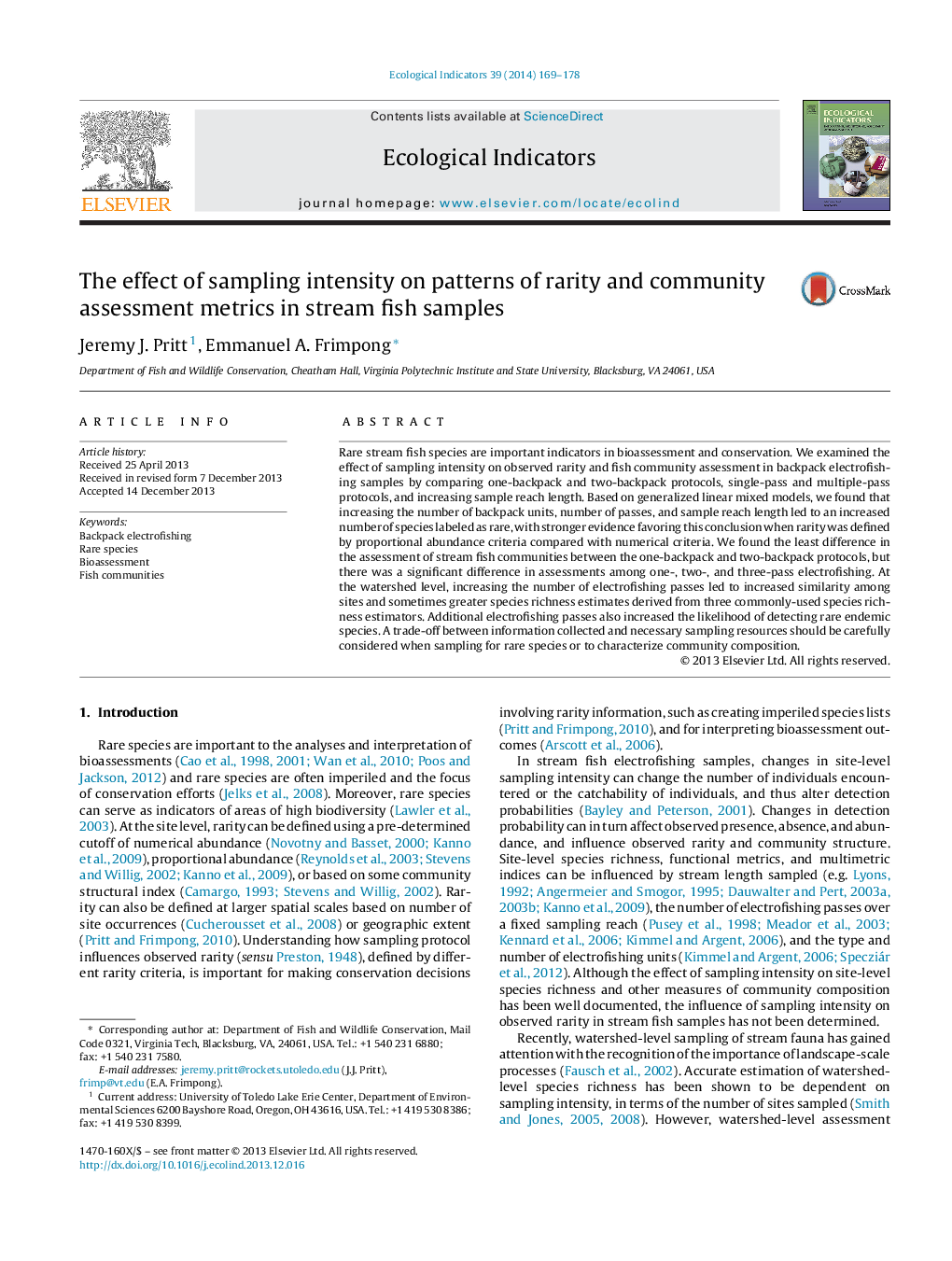| Article ID | Journal | Published Year | Pages | File Type |
|---|---|---|---|---|
| 6295432 | Ecological Indicators | 2014 | 10 Pages |
Abstract
Rare stream fish species are important indicators in bioassessment and conservation. We examined the effect of sampling intensity on observed rarity and fish community assessment in backpack electrofishing samples by comparing one-backpack and two-backpack protocols, single-pass and multiple-pass protocols, and increasing sample reach length. Based on generalized linear mixed models, we found that increasing the number of backpack units, number of passes, and sample reach length led to an increased number of species labeled as rare, with stronger evidence favoring this conclusion when rarity was defined by proportional abundance criteria compared with numerical criteria. We found the least difference in the assessment of stream fish communities between the one-backpack and two-backpack protocols, but there was a significant difference in assessments among one-, two-, and three-pass electrofishing. At the watershed level, increasing the number of electrofishing passes led to increased similarity among sites and sometimes greater species richness estimates derived from three commonly-used species richness estimators. Additional electrofishing passes also increased the likelihood of detecting rare endemic species. A trade-off between information collected and necessary sampling resources should be carefully considered when sampling for rare species or to characterize community composition.
Related Topics
Life Sciences
Agricultural and Biological Sciences
Ecology, Evolution, Behavior and Systematics
Authors
Jeremy J. Pritt, Emmanuel A. Frimpong,
